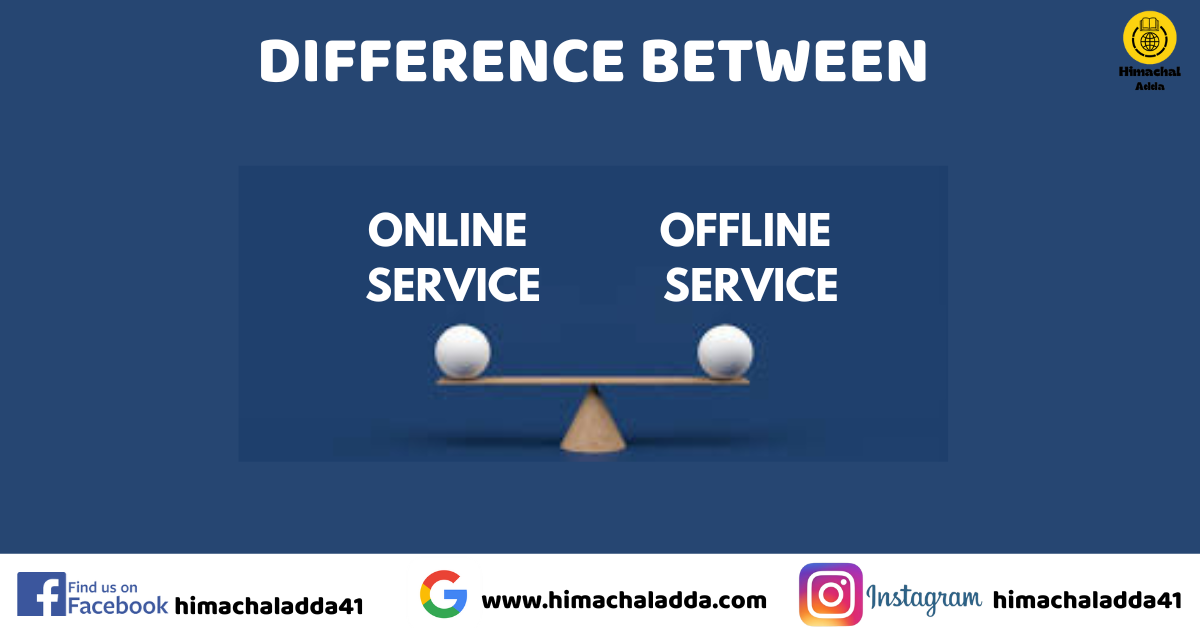Differentiate between Online and Offline services
Online services and offline services are two distinct ways through which people access various products and assistance. They differ in terms of accessibility, convenience, and the mode of interaction. Here are the key differences between the two, along with examples:
| Online Services | Offline Services |
|---|---|
| 1) Online Services are accessible through the internet, allowing users to access them from anywhere, anytime, as long as they have an internet connection and a suitable device. Example -: Video streaming platforms like Netflix or educational websites like Udemy, which can be accessed from any device with an internet connection. | 1) Offline Services require physical presence or access to a specific location to avail the service. Example: Visiting a local gym for a workout session or attending a traditional classroom lecture. |
| 2) Online Services provide convenience in terms of accessing services without the need to travel or be present at a specific location. Example: Shopping for clothes or electronics on an e-commerce website like Amazon, where items are delivered to your doorstep. | 2) Offline Services might require travel, scheduling, and physical presence, which can be less convenient in some cases. Example: Going to a physical store to purchase groceries or clothes, requiring us to physically travel and spend time at the store. |
| 3) Online Services often involve digital interactions and communication, such as chatting, video calls, or online forms. Example:- Using messaging apps like WhatsApp or social media platforms like Instagram to communicate with friends and family. | 3) Offline Services typically involve face-to-face interactions and physical communication. Example:- Meeting with a doctor in person for a medical consultation or visiting a bank branch for financial advice. |
| 4) Online Services offer a vast amount of information and resources at our fingertips, thanks to the internet. Example -: Researching information for a school project using online encyclopedias and academic databases. | 4) Offline Services rely on physical resources and may have limitations in terms of access to up-to-date information. Example -: Using a printed encyclopedia or library resources for research. |
| 5) Online Services raise concerns about online privacy, data security, and the potential for hacking or unauthorized access. Example -: Online banking, where you can manage your finances but need to be cautious about cybersecurity. | 5) Offline Services typically have fewer concerns related to online security, as they involve physical interactions. Example -: Visiting a local bank branch to handle financial transactions, which reduces the risk of online threats. |




